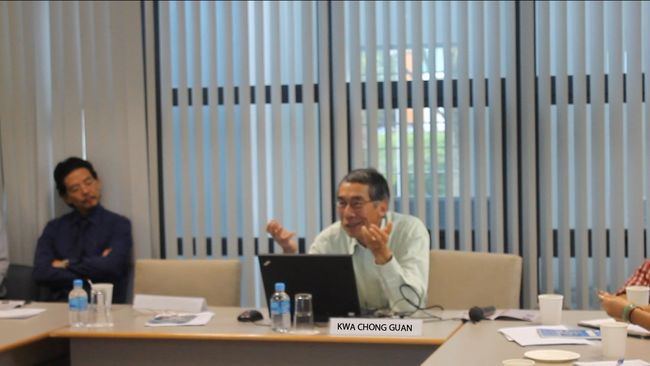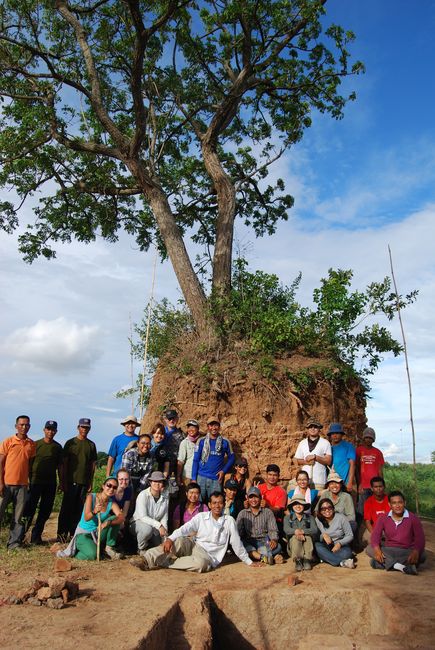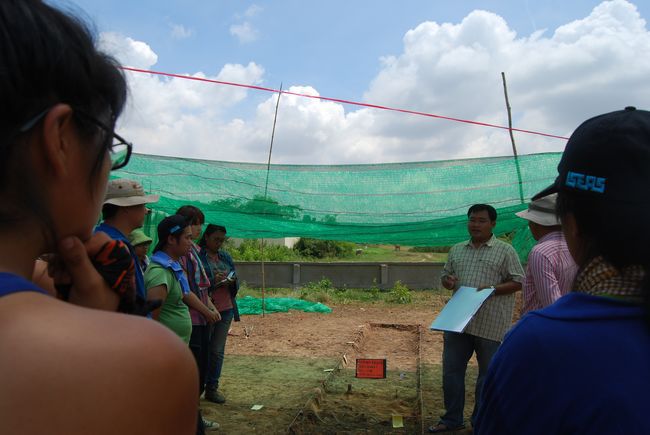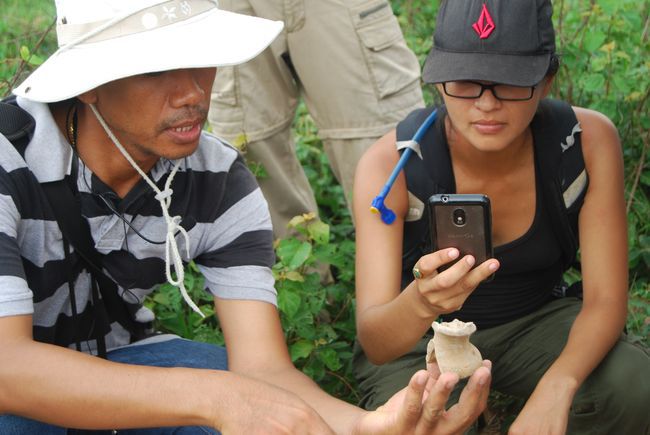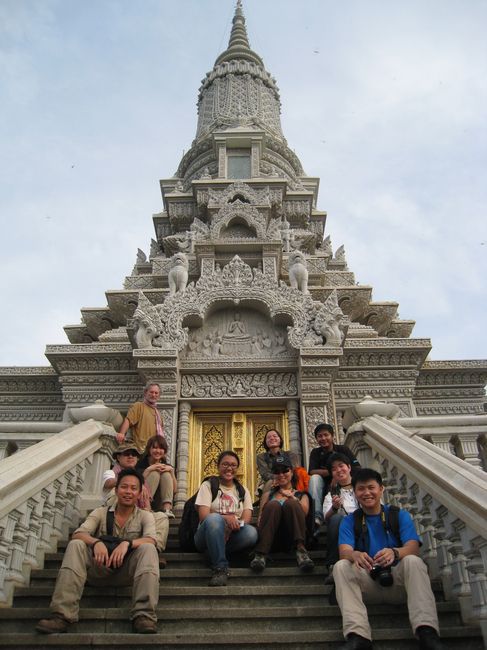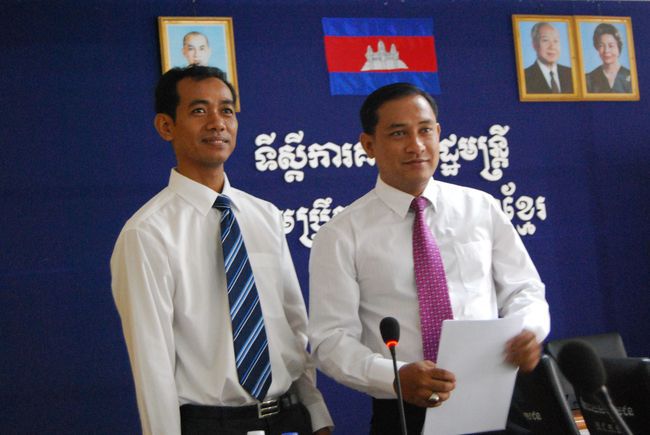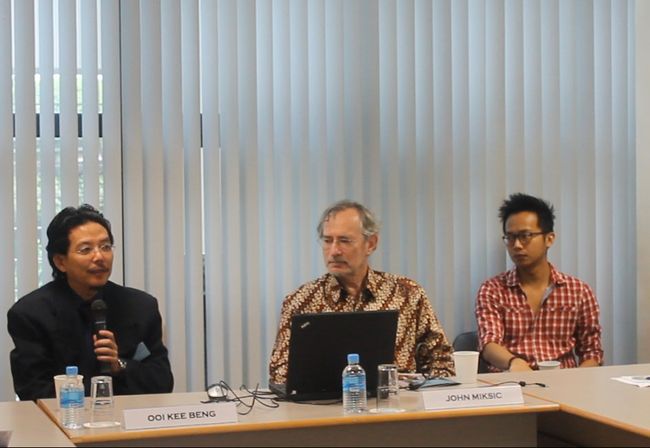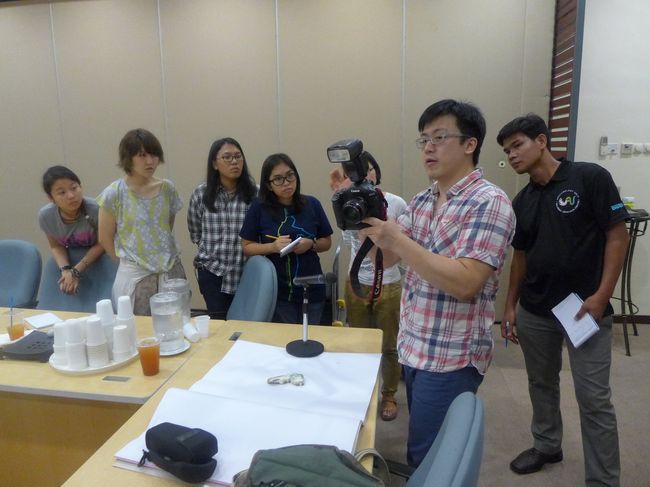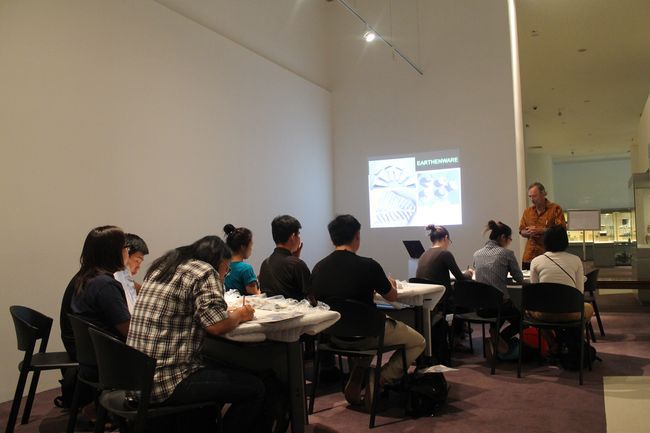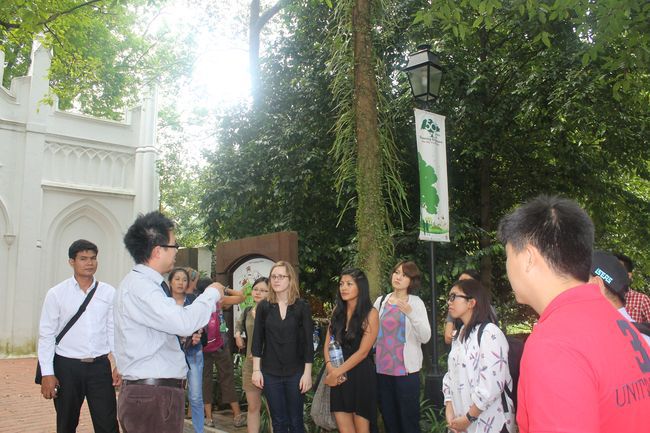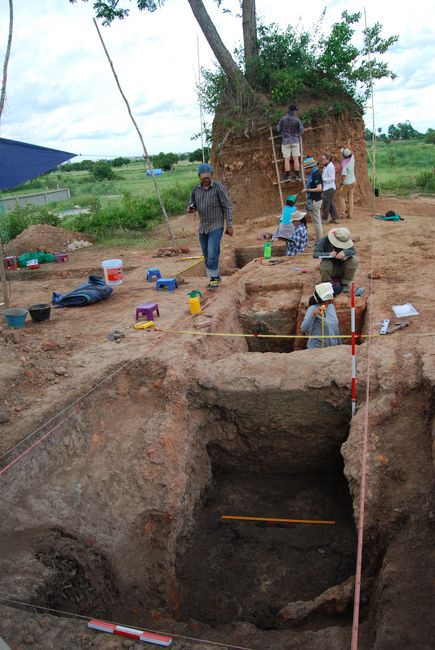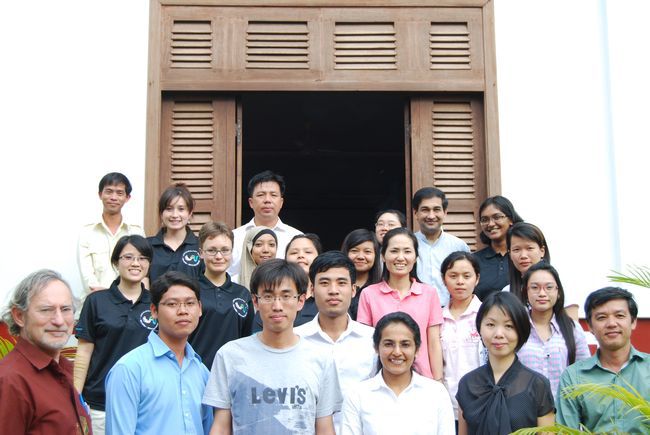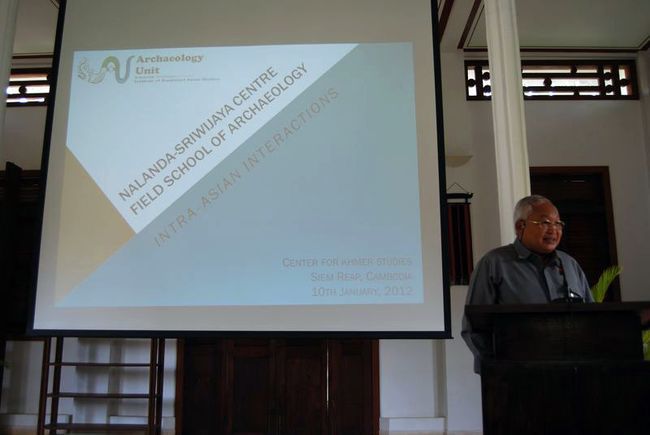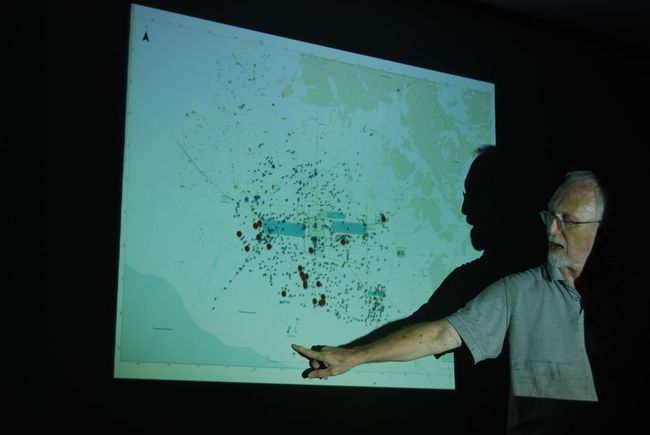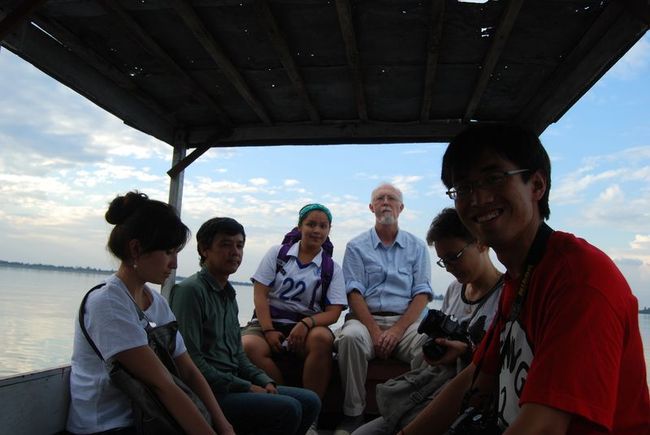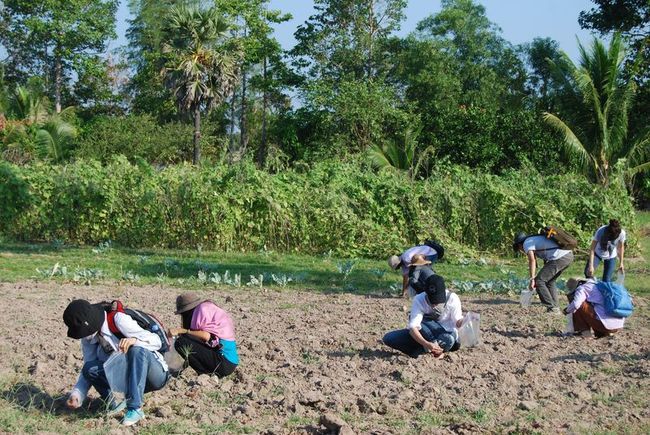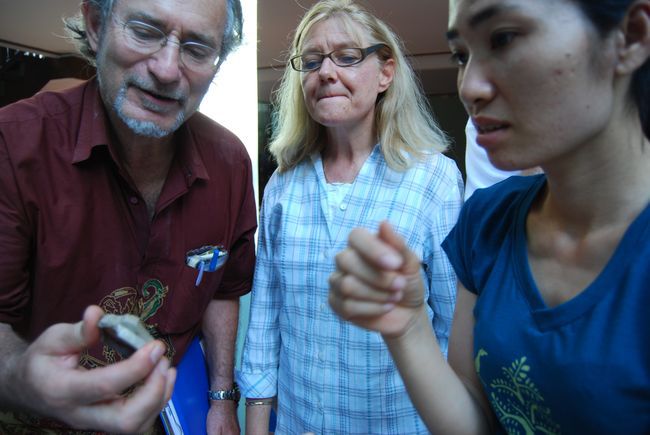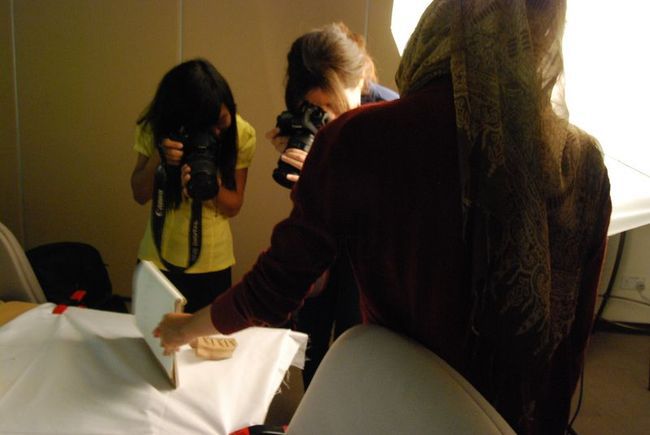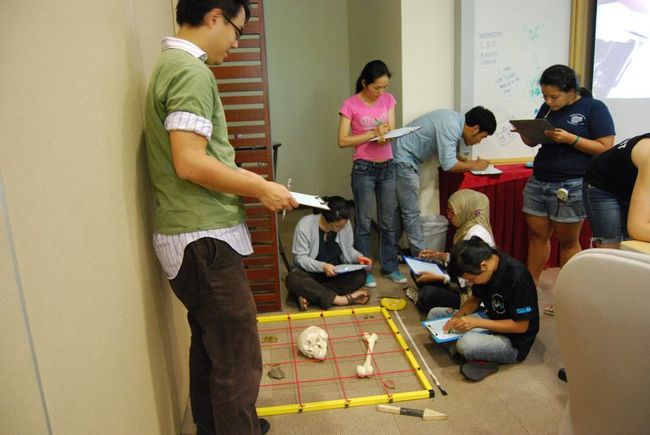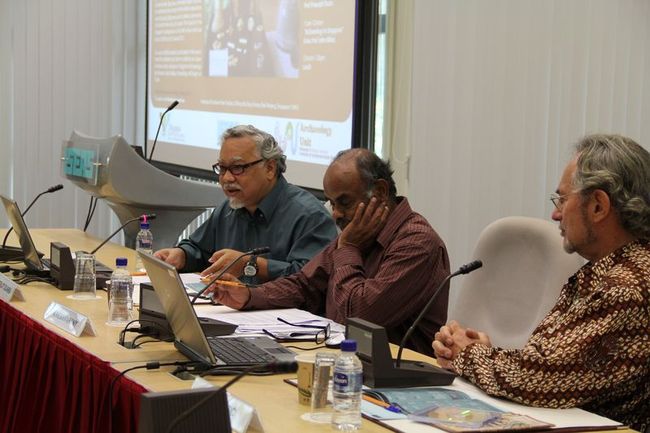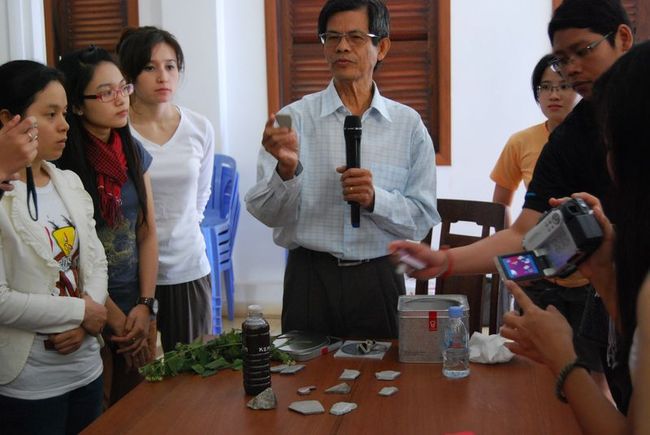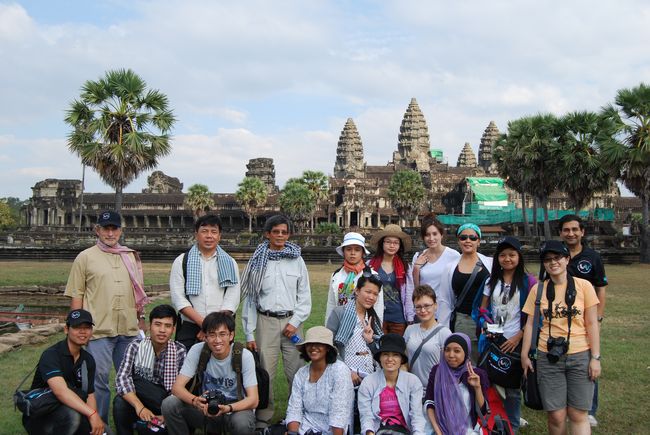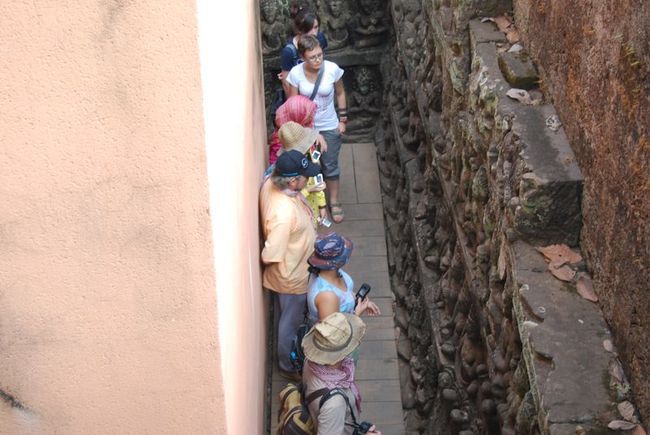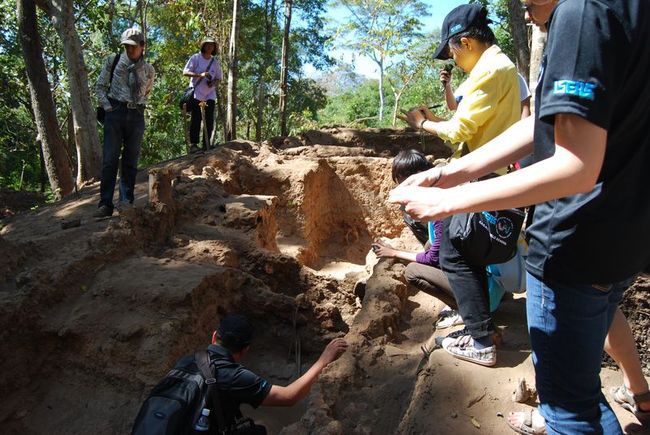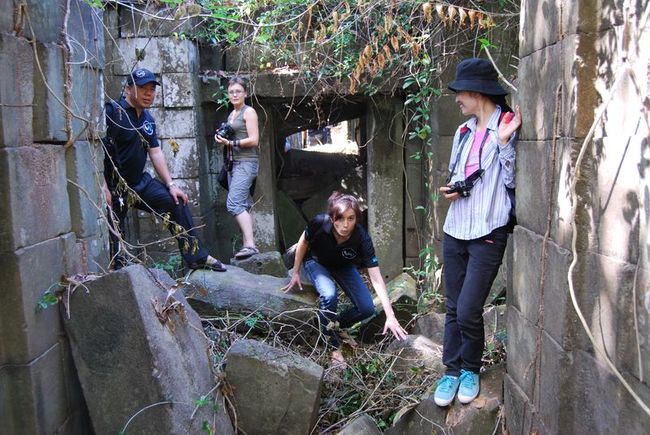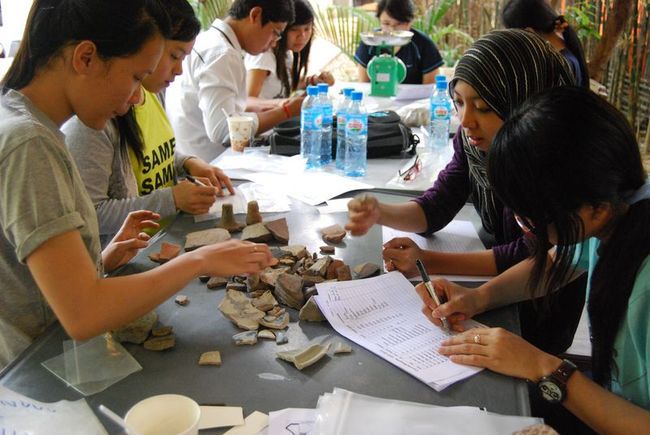
- 3 Perspectives on East Asia Summit
- AEC: Challenges for ASEAN
- South China Sea: Freedom of Navigation in South China Sea & US FONOPS and ASEAN
- Myanmar’s Elections 2015
- Insider Views: Dr Surin Pitsuwan

- Five Facts on the AEC
- Duties, Obligations and Challenges of the ASEAN Chair
- ASEAN and the Haze Crisis
- Strategic implications of the TPP for Southeast Asia
- Insider Views: Tan Sri Dr Mohd Munir Abdul Majid
- ASEAN’s Dialogue Partners
Asia-Pacific Economic Cooperation: New Agenda in Its Third Decade

Ippei Yamazawa is one of the fathers to the study of Asia-Pacific regional cooperation in Japan and has contributed hugely to the development and work of APEC over many years. APEC is a crucial trans-regional arrangement that draws the United States into constructive economic engagement with East Asia. This book makes it clear why APEC remains such a crucial element of regional economic architecture and defines an agenda going forward to which regional leaders should aspire. Here is a first rate exposition of the priorities for regional cooperation in Asia and the Pacific.To purchase the book, click here.
APEC at 20: Recall, Reflect, Remake
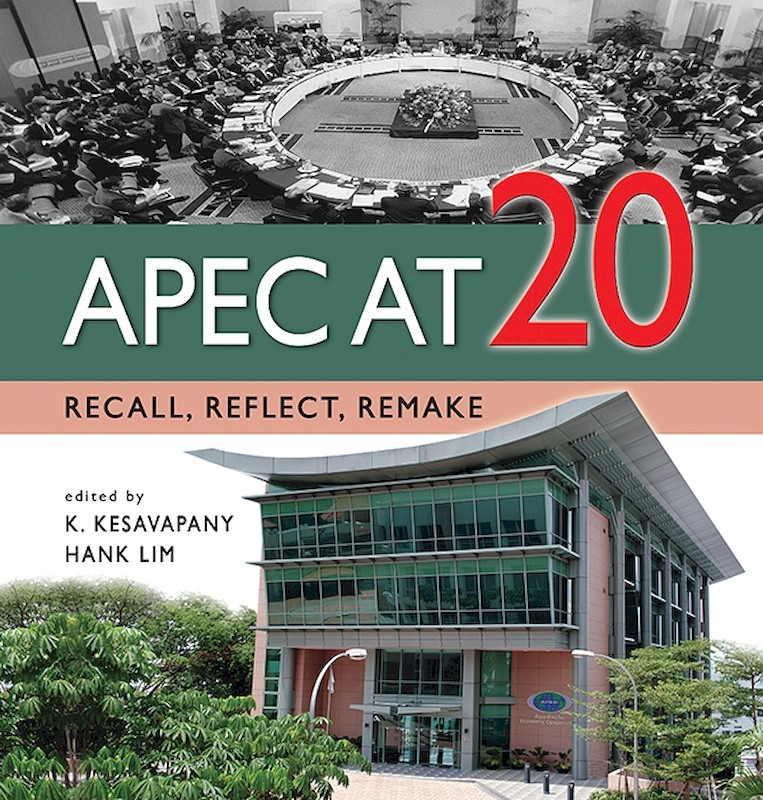
Spanning 20 years of history, the achievements of APEC may seem uneventful in the eyes of some observers. Yet careful deliberation will point to APEC’s many remarkable high points as well as some of the challenges. The foundations of APEC were set in place about 40 years ago based on the achievements of the Association of Southeast Asian Nations (ASEAN) and the Pacific Economic Cooperation Council (PECC). One of the cornerstones of APEC’s vision is to achieve a free and open trade area among its member economies. This vision is anchored in the Bogor Goals that remain the centrepiece of the APEC process. The Bogor Goals represent a cause for celebration as well as angst. Celebration because the region has moved towards achieving a much more liberalized environment of trading and investment since 1989, angst because the deadlines for achieving the goals have not yet been fully realized. Today, APEC embraces many of the world’s dynamic developed and developing economies that are better poised to meet the new challenges of this century. For those seeking to get a quick sweep of APEC, this book recalls, reflects and provides enough food for thought on the possible remake of APEC. The chapters are carefully written by experts who have been directly involved in the APEC process one way or another. The invaluable insights serve to place the whole APEC process in a balanced perspective, yet with candid deliberations. To purchase the book, click here.
An APEC Trade Agenda? The Political Economy of a Free Trade Area of the Asia-Pacific
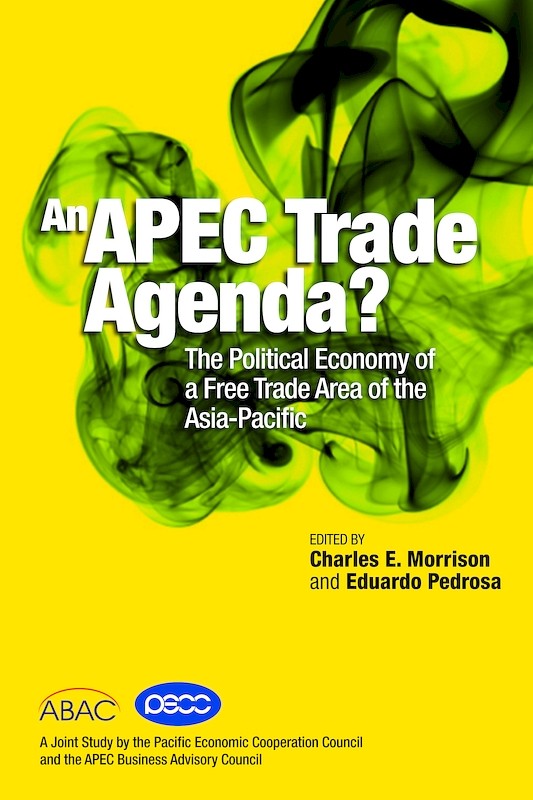
The proposal for an Asia-Pacific-wide free trade agreement is one of the oldest ideas for promoting mutually beneficial regional cooperation dating back to the mid-1960s. In more recent times, the idea has found new support for two main reasons: as a plan B to the stumbling Doha Development Agenda (DDA) round of WTO negotiations; and as a solution to the noodle bowl of bilateral agreements in the region. This report assesses the political feasibility of the Free Trade Area of the Asia-Pacific (FTAAP) proposal and looks at alternative modalities for achieving free trade and investment in the Asia-Pacific. The report includes trade policy perspectives from the three largest economies of the region: the United States, China and Japan, lessons from similar proposals such as the Free Trade Area of the Americas (FTAA), possible convergence among the many preferential trade agreements (PTAs) in the region, and alternative approaches to regional economic integration.To purchase the book, click here.
Developing Bond Markets in APEC: Towards Greater Public-Private Sector Regional Partnership
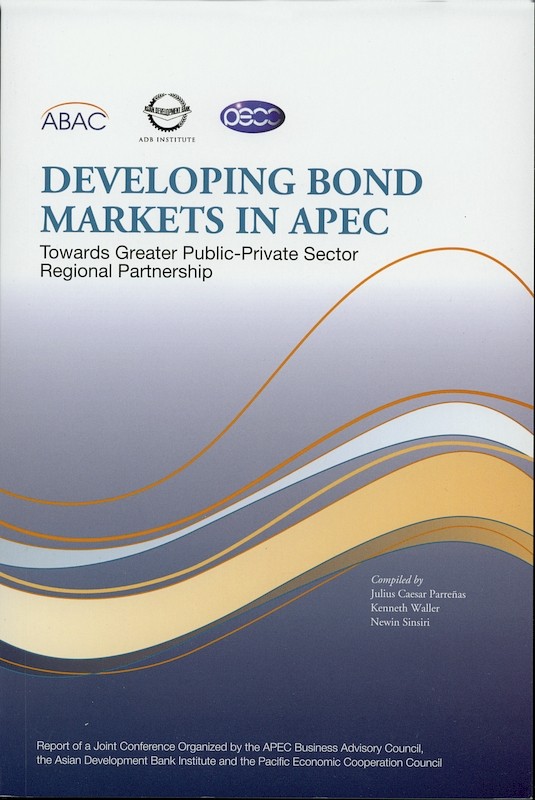
This conference report provides a unique overview of the development of local currency bond markets in the Asia-Pacific region and cross-border investment and issuance in these markets. It brings together insights of the regions leading capital market regulators, private sector market players, finance and central bank officials and experts from academe and international development organizations, who have gathered together to assess the extent to which the regions bond markets have developed, and map out a regional strategy based on publicprivate sector partnership that promises to address key policy reform and capacity-building issues. This report concludes that a few emerging markets in the region have made significant advances, but many others need to undertake fundamental reforms to achieve adequate market depth and liquidity and develop an enabling regulatory framework. Successfully undertaking these reforms requires intensive regional cooperation to help address obstacles in individual economies and facilitate greater cross-border activity in the regions bond markets. Coordination is also needed to ensure the consistency of parallel initiatives being undertaken within various regional bodies, particularly APEC, ASEAN Plus Three and EMEAP, to develop a regional bond market. To purchase the book, click here.
APEC in the 21st Century
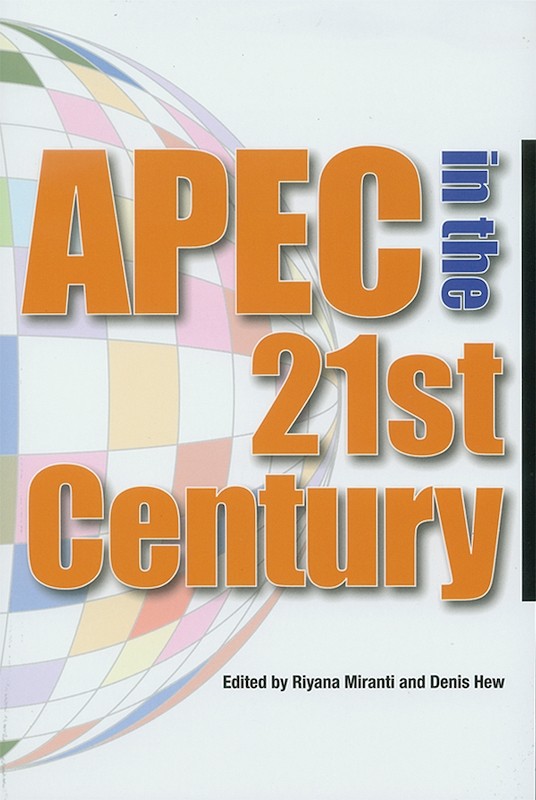
APEC is a unique organization that promotes economic cooperation in the Asia-Pacific region. It remains an informal intergovernmental organization that provides a useful platform for leaders, ministers, businessmen and experts to discuss regional issues on a regular basis. This book examines APECs accomplishments in recent years and the challenges it faces in the new century. These challenges include the proliferation of Free Trade Agreements in the region and the implications of Chinas accession in the World Trade Organization.To purchase the book, click here.
APEC as an Institution: Multilateral Governance in the Asia-Pacific
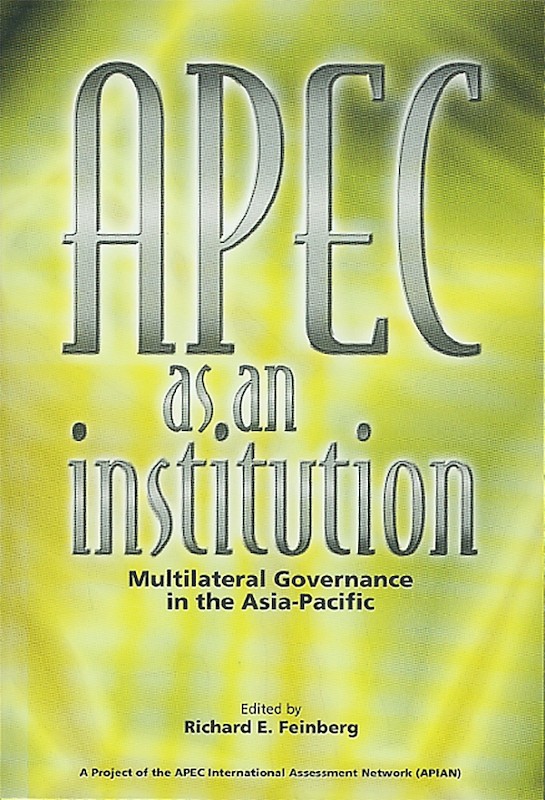
APEC is an experimental multilateralism, relying not on a large bureaucracy but rather upon national government agencies, semi-autonomous inter-governmental committees and “virtual” associations. Organized around the principles of consensus, voluntarism and unilateralism, APEC has eschewed binding agreements enforced through monitoring and robust compliance mechanisms. This volume assesses the strengths and weaknesses of APEC’s “soft” institutionalism, and its capstone policy report, “Remaking APEC”, identifies reforms that would close the credibility gap between APEC’s promises and accomplishments. Chapters by leading scholars at APEC Study Centres investigate APEC’s core agenda — trade and investment liberalization and capacity-building — delve into the inner workings of APEC’s bureaucracy, and explore APEC’s interactions with civil society, including the private sector and NGOs. This volume contains both the policy report and in-depth specialized studies. It is the product of the APEC International Assessment Network (APIAN), a collaborative, independent project among participating APEC Study Centres. APIAN’s first major study, Assessing APEC’s Progress: Trade, Ecotech and Institutions was also published by ISEAS(2001).To purchase the book, click here.
General Information
The second session of the field school was held from 30th May to 17th July, 2013. The Royal Academy of Cambodia was this year’s partner institution for the Archaeological Field School. The curriculum included lectures, excavation, field trips, and laboratory training. Lectures incorporated broad topics—having to do with the historical, economic, and cultural impact of intra-Asian interactions—as well as specific instruction about the analysis and interpretation of Chinese and Southeast Asian ceramics as the most important source of data for the study of this topic. The teaching staff for the training program included prominent researchers from Cambodia, Singapore, and the United States.
In Singapore, students visited local museums and participated in a photography workshop. In Cambodia, students assisted in the excavation of an ancient kiln site at Cheung Ek, near the capital city of Phnom Penh.
Official announcement | FAQ | Information Booklet (2.66MB))
Field School of Archaeology Reading List (146kb) | Lecture Abstracts (108kb)
Participants
There were 37 applicants to this year’s field school session; 12 individuals were selected from the pool of applicants (2 from Cambodia, Indonesia, Singapore, Vietnam, and the United States; and 1 each from China and Japan). In addition, 2 Cambodian participants also attended the Cambodia segment of the field school.
Opening Sessions
The field school was officially opened by Dr. Ooi Kee Beng, the Deputy Director of the Institute of Southeast Asian Studies and Head of the Nalanda-Sriwijaya Centre on the 30th of July 2013 at Seminar Room III, in Singapore. Participants were welcomed by A/P John Miksic, the head of the Archaeology Unit.
The Cambodia segment was opened by Phon Kaseka, the head of the Archaeology department at the Royal Academy of Cambodia, on the 2nd of June, 2013.
Activities
In Singapore and Cambodia, the participants attended a series of lectures designed to provide them with a working knowledge of the background to the current state of Southeast Asian archaeology as well as on Southeast Asian pottery and kiln technology (see “Recorded Lecture: Ceramics, Technology, Trade, and Culture in Southeast Asia” by A/P Miksic). Members of the Archaeology Unit, such as Dr. John Miksic, Mr. Kwa Chong Guan, Dr. Goh Geok Yian, and Mr. Lim Chen Sian, all gave lectures.
In Cambodia, lectures were given by Mr. Phon Kaseka, Dr. Ang Choulean, Mr. Heng Piphal, Mr. Heng Sophady, and Mr. Siyonn Sophearith at the Royal Academy of Cambodia.
ISEAS Archaeology Unit (AU) staff, together with Cambodian colleagues, conducted field study trips to the National Museum of Cambodia, and to sites outside of Phnom Penh such as Udong (an ancient capital of Cambodia) and the Cheung Ek Genocide Center. The participants were also introduced to the Cheung Ek area by doing a walking survey of several ancient pottery kilns in the area, as well as a modern brick kiln.
Instructors at the Cheung Ek excavation included Dr. Chhay Rachna (APSARA Authority), Mr. Heng Piphal, Mr. Hoeung Sothearos, Dr. John Miksic, and Dr. Goh Geok Yian. The field school also provided an opportunity for the participants to understand the results of the excavation, as a public lecture was given by Mr. Phon Kaseka on the 17th of June, 2013.
Participant Presentations & Reports
The closing event of the field school consisted of 15-minute individual presentations by the students on their personal experiences, their insights about Inter-Asian Interactions gained from the field school, as well as the impact of the field school on the trajectories for their own future research and contribution to Southeast Asian archaeology and scholarship. Participants were also required to write a report on their own work performed at Cheung Ek.
Image Gallery

Overview
In 2009, the Institute of Southeast Asian Studies (Singapore) (renamed ISEAS – Yusof Ishak Institute in August 2015) established the Nalanda-Sriwijaya Centre (NSC) with the goal of reviving the ancient university of Nalanda as a center for culture and learning. The NSC conceived of an archaeological training program to support this project, which would bring ten students to Cambodia and Singapore (spending approximately two weeks in each country). The funding for the project is provided by the Singapore Ministry of Foreign Affairs. The teaching staff for the training program has included prominent researchers from Australia, Cambodia, Singapore, and the United States.
This program is meant to contribute to an increased understanding of the ancient and intimate links that have connected Asian countries, to emphasize the history of intra-Asian interactions over the past 2,000 years, and create a community of East Asia Summit (EAS) scholars. It will be through the participants that the training program will disseminate information on the Nalanda University project among the EAS countries’ citizens and governments.
Other institutions within the EAS that collaborated in this project include the Royal University of Fine Arts (RUFA), Authority for the Protection and Management of Angkor and the Region of Siem Reap (APSARA Authority), the Royal Academy of Cambodia, Sydney University, and the Australian National University.
The 18 East Asia Summit countries are: Australia, Brunei, Cambodia, China, India, Indonesia, Japan, Laos, Malaysia, Myanmar (Burma), New Zealand, the Philippines, Russia, Singapore, South Korea, Thailand, the United States, and Vietnam.
General Information
The first session of the field school, which was intially named the NSC Field School of Archaeology, was held from 9th January to 4th February, 2012. The curriculum included lectures, field trips, and laboratory training. Lectures incorporated broad topics—having to do with the historical, economic, and cultural impact of intra-Asian interactions—as well as specific instruction about the analysis and interpretation of Chinese and Southeast Asian ceramics as the most important source of data for the study of this topic. In Cambodia, students worked with Chinese and Khmer ceramics collected from recent fieldwork conducted in the Angkor area by a Cambodian-Australian team in the Robert Christie Centre, a laboratory built in Siem Reap by the University of Sydney. In Singapore, students visited local museums and helped to analyze Chinese and local ceramics excavated from 14th-century sites.
Official announcement | Information Booklet (download as PDF or read online as a flipbook)
NSC Field School of Archaeology Reading List (this was provided to participants as PDFs)
Participants
There were 57 applications to the field school; 10 individuals were selected, with 1 participant each from Cambodia, China, India, Indonesia, Myanmar, the Philippines, Russia, Singapore, Vietnam, and the United States. In addition, 4 local Cambodian participants also attended the Cambodia segment of the field school.
Opening Sessions & Visiting Dignitaries
The field school was officially opened by H.E. Khuon Khun-Neay, the Deputy Director General of APASARA Authority on the 10th of January 2012 at the Centre for Khmer Studies, in Siem Reap, Cambodia. Participants were welcomed by Dr. Michael Sullivan Director of CKS. Numerous Cambodian government officials, particularly from the fields of heritage management and archaeology, attended the opening ceremony. The wives of Singapore’s Minister of Foreign Affairs and the Ambassador to Cambodia of the Republic of Singapore also visited the workshop in the afternoon of the official opening. Dr. Miksic, a member of the board of the Center for Khmer Studies, gave the VIPs a guided tour of the Center.
The Singapore segment was opened by Ambassador Kesavapany, the Director of ISEAS, and Professor Prasenjit Duara, the Raffles Professor of Humanities, and Director at the Asia Research Institute, National University of Singapore, on the 25th of January, 2012.
Several members of the local press corps were in attendance and a resulting article on the field school was published in the Straits Times on the 30th of January, entitled “Building bridges to help dig deeper: New unit aims to bring together region’s young archaeologists.” Dou Hao / Zb Comma also released an article in Mandarin entitled “A New Experience in Archaeology, Bridging the Gaps in History.”
Activities
In Cambodia, the participants attended a series of lectures designed to provide them with a working knowledge of the background to the current state of Cambodian archaeology. These lectures were conducted by local Cambodian archaeologists: Dr. Ly Vanna, Dr. Ea Darith, Mr. Chhay Rachna, and H.E Tan Boun Suy, the Director of Angkor International Documentation for Research Centre of APSARA.
ISEAS Archaeology Unit (AU) staff, together with Cambodian colleagues, conducted field study trips to the Angkor Archaeological Park, the Preah Norodom Sihanouk Museum, and to sites outside of Angkor including Phnom Krom and Beng Melea. The participants also made a visit to the ISEAS AU sponsored excavations at Torp Chey, an 11th to 12th century kiln complex that was recently uncovered.
At the University of Sydney Robert Christie Centre, the participants spent a week learning about laboratory analysis and processing of archaeological ceramics. The students also took part in a field survey conducted by the University of Sydney’s Greater Angkor Project (GAP), and visited the future site of a major research and restoration project at the West Mebon. Instructors included Prof. Roland Fletcher, head of GAP; Dr. Martin Polkinghorne; Mr. Wayne Johnson; Dr. Dougald O’Reilly; and Ms. Linda McLaren.
In Singapore, classes were held to introduce the basics of archaeological artifact photography, artifact illustration, as well as laboratory processing of ceramic finds. Other classroom lessons include lectures on the archaeology of Singapore, inter-Asian interactions past and present, and the students were also introduced to museum management of artifacts, for which four museums and one archaeological site were visited. Prof. Kwa Chong Guan gave a lecture on museology at the NUS Museum. The field school also provided an opportunity for the participants to understand the applications of the past to today’s political agendas as the ISEAS NSC organized a large public seminar titled “An Afternoon with Zheng He” involving the participants; over a hundred people attended the seminar as the subject matter was quite popular. The documentary “Junk History” was screened, followed by a lively discussion between the organizers, audience and the field school participants.
Participant Presentations & Reports
The closing event of the field school consisted of 15-minute individual presentations by the students on their personal experiences, their insights about Inter-Asian Interactions gained from the field school, as well as the impact of the field school on the trajectories for their own future research and contribution to Southeast Asian archaeology and scholarship. Each participant submitted two separate written papers on interactions within Asia, based on their experiences in Cambodia and Singapore, as reflected in history and archaeology.
Image Gallery
NSC AU Archaeology Report Series
The following authors have kindly granted the NSC permission to distribute online the following research reports for non-commercial purposes. If you would like to use the information or ideas presented in the report(s) below, please acknowledge the source through the use of proper academic citations.
- Mathers, W. M., and Flecker, M. (eds.) (1997). Archaeological Recovery of the Java Sea Wreck. Maryland: Pacific Sea Resources, Inc. (6.51MB)
- Ward, Jayne, Kotitsa, Zoi, and D’Angelo, Alessandra (eds.). (2004). The Belitung Wreck: Sunken Treasures from Tang China. Seabed Explorations New Zealand Ltd.
Contributors
William M Mathers, a history major at Yale, served as a US Navy Diving and Salvage officer in Vietnam. After the military, he worked as a marine salvage master in the South Asia. In 1975, he became the operations partner in a marine construction firm building oil terminals, commercial docks and related civil works around the world. Ten years later, he formed PSR to undertake commercial marine archaeological projects in water depths up to 500 feet. His marine experience also includes the ownership and design of ocean-going sailing and power catamarans.
Dr Michael Flecker has excavated over a dozen shipwrecks throughout Southeast Asia over the past 25 years. They date from the 9th to the 19th century and derive from China, Southeast Asia, Arabia and Europe. Flecker consequently specialises in ancient Asian ship construction and trade. For details of these shipwrecks and Flecker’s publications see www.maritime-explorations.com.
Prof. John Miksic has kindly granted the Archaeology Unit permission to disseminate an Indonesian translation of W. Marschall’s (1968) Metallurgie Und Frühe Besiedlungsgeschichte Indonesiens for non-commercial research purposes. The translation by Satyawati Suleiman from the original German to Indonesian was privately commissioned by Prof. Miksic. If you would like to use the information or ideas presented in the works below, please acknowledge the source through the use of proper academic citations.
[Prof. John Miksic telah memberikan izin kepada Satuan Arkeologi untuk menyebarkan sebuah translasi dalam bahasa Indonesia dari bahasa German, yaitu “Metallurgie Und Frühe Besiedlungsgeschichte Indonesiens” yang ditulis oleh W. Marschall (yang pada awalnya diterbit pada tahun 1968), untuk tujuan penelitian yang non-komersial. Prof. Miksic dulu meminta Satyawati Suleiman untuk menerjemahkan karya tersebut secara pribadi. Jika Anda ingin menggunakan informasi atau ide-ide yang disampaikan oleh karya tersebut, tolong kutipkan sumbernya.]
- De Loos, D. (1889). Gesteenten En Mineralen van Nederlandsch Oost-Indie Vol. II: Diamant en Edele Metalen. Haarlem: De Erven Loosjes. (In Dutch) (3.95MB PDF)
- Marschall, W. (1980s). Metalurgi dan Sejarah Kuna di Indonesia / Metallurgie Und Frühe Besiedlungsgeschichte Indonesiens (S. Suleiman, Trans.). Ethnologica Neue Folge Band 4. E. J. Brill: Köln. (In Indonesian; Original German work published in 1968) (15.2MB PDF)
About Satyawati Suleiman
Satyawati Suleiman was an art historian and Archaeologist who became the Director of the National Research Center for Archaeology (Indonesia) between 1973-1977. She was very influential in developing the study of ancient Sumatra, and in particular, of Sriwijaya (the 7th-13th century empire based in Sumatra). For more information, please see:
Wolters, O. W. (1988). “In Memoriam: Satyawati Suleiman, 1920-1988.” Indonesia 46 (Oct.): 123-125. http://cip.cornell.edu/seap.indo/1107010943.
[Satyawati Suleiman adalah seorang sejarawan seni dan Arkeolog yang menjadi Direktur Pusat Penelitian Arkeologi Nasional (Indonesia) diantara tahun 1973 sampai 1977. Beliau dikenali sebagai seseorang yang telah mengarahkan dan mengembangkan kegiatan penelitian tentang Sumatera zaman dahulu, dan khususnya, tentang Sriwijaya (sebuah kerajaan yang berbasis di Sumatera diantara abad ke-7 dan ke-13). Untuk informasi lebih lanjut silahkan baca artikel yang diatas.]
The following authors have kindly deposited these following works with us for online dissemination. If you would like to use the information or ideas presented in the works below, please acknowledge the source through the use of proper academic citations.
- Ardika, I. W. (1991.) Archaeological Research in Northeastern Bali Indonesia. Unpublished doctoral dissertation, Australian National University. (6.52MB PDF)
Abstract:
Archaeological discoveries indicate that the coastal areas around the villages of Julah, Pacung and Sembiran in northeastern Bali have been involved in long distance trade since at least 2000 years ago. The discovery of Indian sherds, including Rouletted Ware, a rim sherd of Arikamedu type 10, a sherd inscribed with Kharoshthi characters and hundreds of glass beads suggest that contacts between India and Bali were already occurring at this time. The Indian traders might have stopped at Sembiran while trading for spices and aromatic woods from the eastern part of the Indonesian archipelago. Sembiran probably functioned as an ancient port located on a major spice trade route.
Sembiran might have also functioned as a manufacturing site, as suggested by the finding of a fragment of a mould for impressing decoration into wax during the production of Pejeng-type bronze drum.
Inscriptional data from the 10th to 12th centuries indicate that Julah (including Sembiran?) had developed as “a gateway community” into northeastern Bali by this time. There was a market in Julah, and also a guild or community of foreign traders. Regulations are mentioned in the inscriptions for those who lived in this settlement, which was plundered at least once and the villagers captured, killed, or dispersed. It is not clear why Julah was eventually abandoned as a port, but rapid alluvial sedimentation and poor security could have been major reasons for its abandonment.
This thesis describes the excavated archaeological data from sites in the vicinity of Julah, most of which date to the first centiry AD, later deposits are present in some trenches. Appendices at the end of this thesis describe the result of pottery and soil analysis, glazed trade ceramics, and the contents of the inscriptions of the 10th to 12th centuries.
- Edwards McKinnon, E. (1984). Kota Cina: Its Context and Meaning in the Trade of Southeast Asia in the Twelfth to Fourteenth Centuries. Unpublished doctoral dissertation, Cornell University. (23.9MB PDF)
Abstract:
Over the past three-quarters of a century, the search for the lost Malay kingdom of Srivijaya has evolved through the study of epigraphy, historical sources, particularly Chinese, and art historical artifacts, to geographical survey and analysis of archaeological materials recovered by excavation. These developments have led to a more complete understanding of both human and natural resources and the environment of the area in which they existed.
Little or nothing was known of Srivijayan period archaeological sites in northeastern Sumatra, an area which historical sources suggest played an important role in east-west maritime trade during the first and early second millennium A.D. Excavation undertaken at Kota Cina thus provides data which help to shed light on cultural and economic in this area during the twelfth and fourteenth centuries, a period in which the name Srivijaya fades from historical sources.
Analysis of ceramic materials, both low fired earthenware and high fired imported stonewares, has proved useful, both as an aid to dating and for establishing physical trading and cultural relationships overseas. The high quality of much of the imported stoneware suggests a high level of prosperity among the ancient inhabitants of the site and infers important connections with the interior, a rich source of natural products such as benzoin, camphor and possibly gold.
Analysis of excavated materials also indicates important connections with both south India and south China and suggests the presence of Tamil and south Chinese communities at the site. The presence of the former may account for the occurrence of Dravidian sept names among the Karo merga Sembiring community in the mountainous hinterland. The existence of a Chinese community in northeastern Sumatra occurs at a time that historical sources indicate increased Chinese maritime activity in the area.
- Miksic, J. N. (1979). Archaeology, Trade and Society in Northeast Sumatra. Unpublished doctoral dissertation, Cornell University. (30.6MB PDF)
Abstract:
“By the first or second century A. D. a set of integrated political and economic institutions existed in many ports on a network of maritime trade routes which connected coasts of east Africa, western Asia, India, and Southeast Asia. China independently evolved similar procedures and institutions in her dealings with nomadic groups along with her inland frontiers, and when in about the fifth century A. D. the ports in south China joined in the commerce of the Nanhai (South Seas), China used many of these institutions to regulate this commerce as well. Merchants from the West would have found practices in the Chinese ports to be little different from those already familiar from visiting other ports in the network. This system was still functioning when the Portuguese and other Europeans began trading in the Indian Ocean in the sixteenth century.
Indonesians probably participated in the Indian Ocean network at a very early period. Indonesian products such as camphor, benzoin, cloves, and pepper were important commodities in Indian Ocean markets. Control over foreign trade could provide enormous wealth for rulers, and historical evidence shows that members of elites in maritime Southeast Asia and elsewhere were deeply concerned with acquiring wealth and exotic objects to use as means of maintaining political power.
Historical reconstructions indicate that Sumatran emporia were important commercial centers by the early first millennium A. D. The sources of marketable Sumatran produce lay in the highlands, but there is little historical information regarding the routes by which the commodities were brought to the coastal emporia, and the arrangements between hinterland producers and lowland rulers which governed this internal traffic. This lack of information is to some extent the result of policies which lowland rulers pursued, in their attempt to interpose themselves between producers and foreign merchants.
Archaeological research, still in the initial stage in Sumatra, can contribute to the study of the old commercial system in two ways: by discovering and examining sites of coastal emporia, and by tracing the cultural, political and economic relationships between coastal emporia and their hinterlands. The second goal has not yet been attempted in Southeast Asia. Studies of hinterland-lowland relationships can contribute significantly to reconstructions of pre-colonial Indonesian society, and the role of long-distance trade in the development of Indonesian civilization.
In this study, which focuses on the Deli River valley of northeast Sumatra, [the author uses] historical, geomorphological and archaeological information to discover places which were important in pre-colonial trade in imported objects, and the extent to which the “gateway city” hypothesis is useful in understanding early Sumatran economic processes. [The author] also make some suggestions for future research in Sumatra to test hypotheses formed on the basis of this data, and consider briefly some ways in which the study of Sumatran civilization can contribute to the broader questions of the role of long-distance trade in the evolution of civilized societies generally.
- Mundardjito. (1993). Pertimbangan Ekologi Dalam Penempatan Situs Masa Hindu-Buda di Daerah Yogyakarta: Kajian Arkeologi-Ruang Skala Makro. Unpublished doctoral dissertation. Universitas Indonesia. (9.46MB PDF)
- English translation of thesis summary by S. T. Foo (140KB PDF)
Abstract (written by S. T. Foo):
How might people choose certain plots of land for the location of a temple building during the Hindu-Buddhist period in central Java? Would some of these decisions be guided by ecological considerations? Ancient Indian texts, such as the Mānasāra-Śilpaśāstra and Śilpa Prakaśa, which outlined some guidelines for temple construction in India, for example, suggested that land and water potential were important considerations; however, were the builders following such guidelines in central Java? Mundardjito’s regional research, which focuses on the Bantul and Sleman districts of Central Java, looks at whether there are correlations between temple site distribution and natural resource variables (such as terrain gradient, landforms, soil types, and rock types) as well as land potential variables (such as effective soil depth, groundwater availability, and the distance to rivers and/or springs). His research goes on to look at what kinds of variable clusters and site groupings would be produced on the basis of ecological variables alone.
Please note that the indonesian PDF only contains the Summary, Chapter 1, Chapter 7, and segments of the appendix. The AU has translated the summary into English.
Contributors
Dr. I Wayan Ardika is a senior lecturer at Udayana University’s Faculty of Letters. He has a bachelor’s degree in Archeology from Udayana University and a doctoral degree in Prehistory and Anthropology from Australian National University. He has served as the dean of the Faculty of Letters at Udayana since 2003. He has also served as the dean of the Faculty of Tourism (1999-2001), head of postgraduate program on tourism (2001-2003) and has served in the post-graduate program on cultural studies (head, 2001-2003; secretary, 1996-1999).
Dr. E. Edwards McKinnon is an Associate Fellow at the Nalanda-Sriwijaya Centre, ISEAS – Yusof-Ishak Institute. He has received a PhD. and an M. A. from Cornell University and is a Fellow of the Royal Asiatic Society, London. A long term resident in Indonesia, he is concerned with cultural heritage management and conservation and has written on art historical and archaeological subjects relating to Sumatra, west Java and Kalimantan, in particular archaeological ceramics, Buddhist imagery in Kutei and early Islamic tombs in Aceh. His current research interests are mediaeval south Indian relationships with Sumatra, the pre-sultanate archaeology of Aceh and arrival of Islam as well as the historical impact of seismic events in the Aceh region.
Dr. John Miksic is an Associate Senior Fellow at the Nalanda-Sriwijaya Centre, ISEAS – Yusof-Ishak Institute. He is also Associate Professor at the Department of Southeast Asian Studies, National University of Singapore. As a student Dr. Miksic joined archaeological expeditions to northern Canada and Honduras, but over the last 40 years he has been based in Southeast Asia, conducting archaeological and historical investigations in Singapore, Malaysia, Thailand, Indonesia, Burma and Cambodia. He is a widely-published author with key works including: Archaeological research on the “Forbidden Hill” of Singapore: excavations at Fort Canning (1985); Borobudur: golden tales of the Buddhas (1990); Old Javanese Gold (2010); Earthenware in Southeast Asia (2003); Early Singapore 1300s-1819: Evidence in maps, texts and artefacts (ed. with Cheryl-Ann Low) (2004); and the Historical Dictionary of Ancient Southeast Asia (2007). His interests include early Buddhist artifacts and monuments; ceramics of China and Southeast Asia; gold; urbanization; and maritime trade.”
Prof. Dr. Mundardjito is currently Guru Besar Luar Biasa at the Department of Archaeology, Faculty of Humanities, University of Indonesia. He was one of the founding members of Ikatan Ahli Arkeologi Indonesia (IAAI) in 1976 and has also written important works on Borobudur and its vicinity and regarding Trowulan and the Majapahit kingdom. Specializing in landscape and ecological archaeology, he was also involved in the implementation of an Indonesian Archaeological Code of Ethics, which was passed by the IAAI Congress in 2005. He received the Achmad Bakrie award for Social Thinker of the Year in 2014.

The Victoria Concert Hall excavation site. (Credit: Lim Chen Sian)
The Victoria Concert Hall is located on the northern bank of the Singapore River, and sits within the commercial heart of modern and colonial Singapore, as well as the ancient settlement of 14th century Temasek. Built in honor of Queen Victoria, the Victoria Memorial Hall (c.1905) was erected next to the old Town Hall (c.1862); a clock tower was later added in 1909 between the two buildings, and in 1979 the Memorial Hall was renamed as the Victoria Concert Hall (VCH).
In order to evaluate and explore the potential archaeological reservoir of the VCH site, a team led by Mr. Lim Chen Sian (SEASP, ISEAS) conducted a trial excavation in June 2010. The trial excavation yielded a significant amount of artifacts; enough to warrant a large-scale salvage excavation in September 2011 prior to further construction development. The team excavated a segment of the construction impact zone along Old Parliament Lane, recovering some 600kg of artifacts that would have otherwise been lost to the bulldozers. The salvage excavation was jointly organized by the Singapore Heritage Society, the Department of Southeast Asian Studies (National University of Singapore), and the Archaeology Unit (ISEAS – Yusof Ishak Institute).

An excavation pit at the Victoria Concert Hall site. (Credit: Lim Chen Sian)



